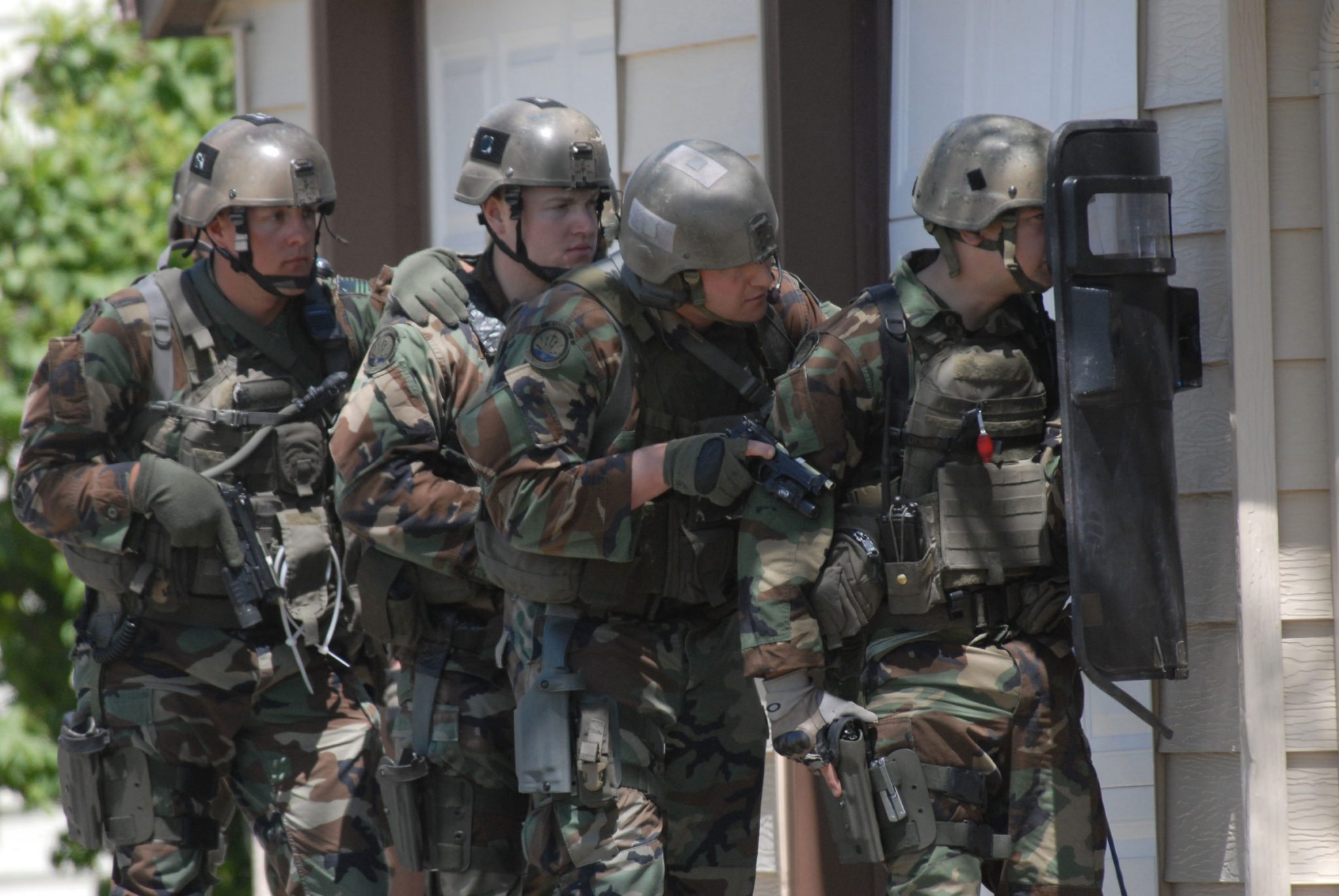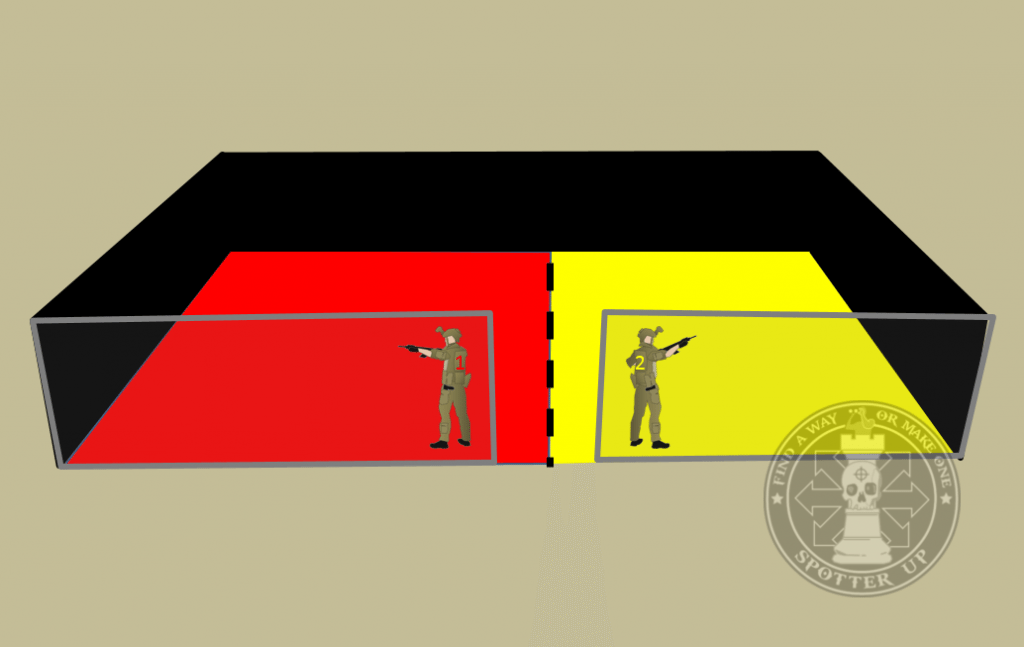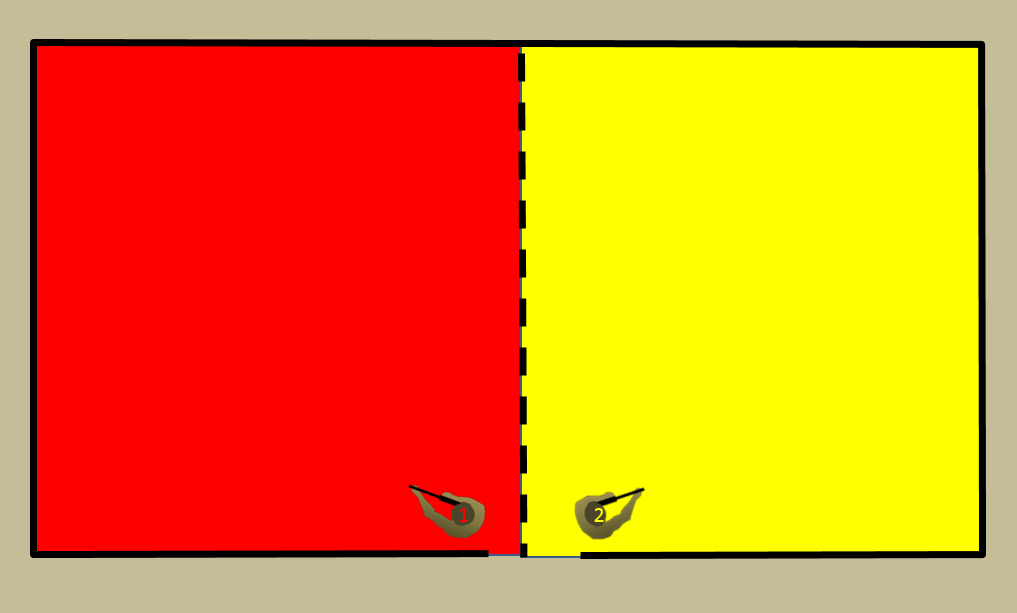Areas of Responsibility
You ever see the old 1970’s television show called the Brady Bunch? You know the episode where Peter is banging a hammer on his bedpost just to irritate his brother? Yeah that one. Did I just show you my age? Dang. Anyhow, bros Bobby and Peter Brady divide their room in two by placing a strip of white tape through the center of it. What’s an old 1970’s family show have to do with area of responsibility? A lot. What can we learn from it?
In the episode the brothers divide the room in two and are supposed to maintain their own zones of the room. But they fail to do this because they are too busy meddling in the other person’s area. If they stuck to the original roles set out for them neither brother would have an issue at all; they get to maintain control by dominating their own area; if they work together they can have their own area, and some of their brother’s too, by observing it.
How do we apply this old t.v. show to being tactically proficient? Read below.
The act of clearing a room is to enter the room while scanning the danger areas until that room is safe enough to be occupied and controlled. The goal of the individual(s) is to dominate the area, and control it by having proper interlocking fields of fire.
The important part of that act when clearing the room is to use Areas of Responsibility (AOR). Areas of Responsibility means each individual has the ability to act independently within a room (area) and make decisions without authorization from any one else.
The individual(s) divide the room into sections. Assigning a section of the room to each individual allows the room to be cleared more quickly. If two individuals enter a room and they are both looking in the same direction, who then is looking at the unviewed section? No one is.
Having an area of responsibility means each individual doesn’t take on more responsibility than he needs to. He only handles his area and they work together. Each person should maintain interlocking fields of fire with the other individuals. We will cover fields of fire in another article.
Two individuals entering a room will have only have 50% percent of a room between them to clear. If a room allows four individuals to enter it, then they only have 25% of the room to clear from the original 100%. Sharing the workload among the number of individuals entering the room helps maintain 360 degrees security if they work together.
When using the doorway as a point of entry the individuals must determine if the door swings in or out. Visible hinges typically mean the door will swing out. Hinges that are not visible typically mean the door will swing in or away from the “operator”.
An advantage to opening the door from the hinge side means one of the individuals can visually scan partly inside the room before crossing the threshold and before the door is fully opened. Individuals should train to recognize the characteristics of entry points to allow maximum security. Along with good security, individuals need to have quick and smooth entry.
Based on certain characteristics of an entry point the individual will select their positions. The first individual entering the room should position on the side that provides the least path of resistance.
Some teams determine beforehand which direction each man will move after entering the room. If the first man moves left, the second man moves right or vice-versa. Once the door is opened the point is to get the first individual into the room quickly so the other individual(s) can follow on his heels. There shouldn’t be a gap between them.
Upon entering the room the individuals will gain a better understanding of the size of the room, however the obstacles such as furniture and the enemy position, determines the directions as to where the individuals might move. These factors will help the first individual determine the next course of action. As much information about a room should be ascertained before entry. Entry generally is a last resort; more info to follow regarding this concept.
Down below we show you a cartoon illustrating how an entry might take place. We will briefly explain an entry but will be sure to touch upon Room Entries in another Basic Tactics article.
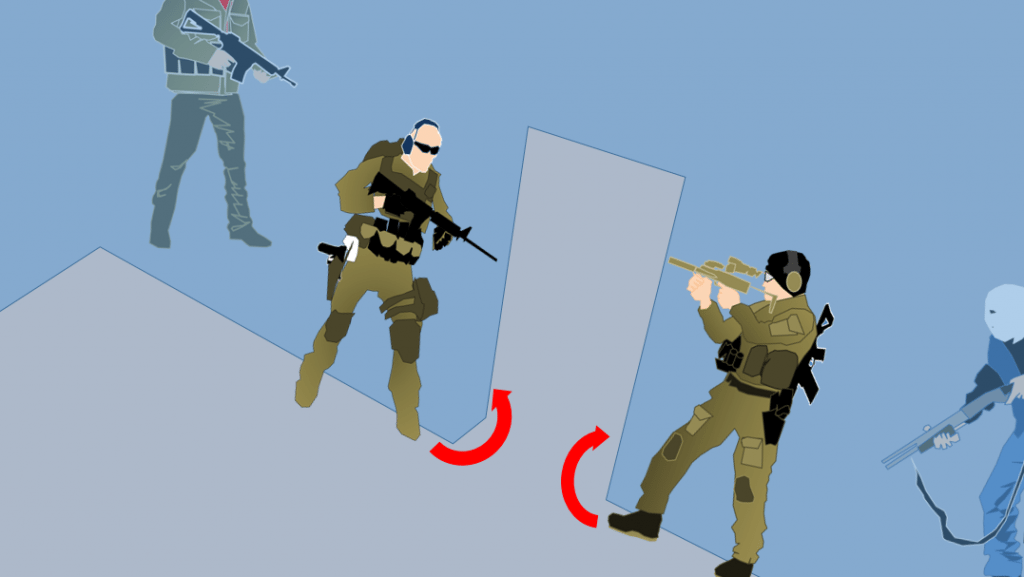

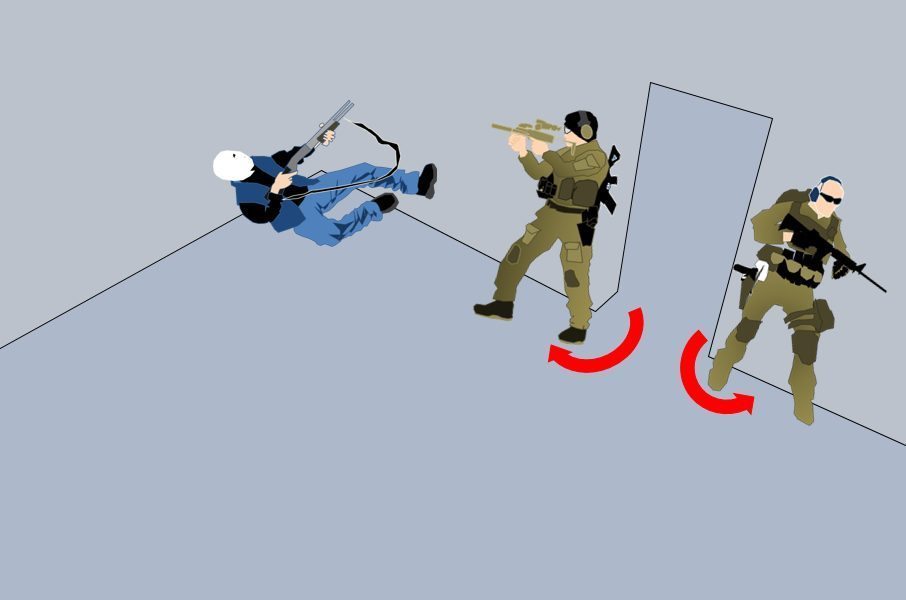
Spotter Up will assume “no” responsibility for any use or misuse of information from this article. This article alone will not make the reader an expert in tactics or in firearms nor can it be used as a substitute for PROFESSIONAL TACTICAL TRAINING or WEAPONS TRAINING. Spotter Up advises you to visit our site for training courses with a certified instructor On ALL weapon platforms.
*Operator: Troop member/Officer
(Image courtesy of http://www.americanspecialops.com/photos/)
